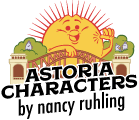When Catherine Kapphahn was a little girl, she sensed that there were things her mother wasn’t telling her.

Catherine is the author of “Immigrant Daughter.”
What she knew was that her mother was from the former Yugoslavia and that she did things that other mothers didn’t — she took dancing lessons, she took miles-long walks around the neighborhood and she felt her friends’ pain as intensely as if it were her own.
And, sometimes, in the middle of the night, she sobbed.
“Every time I asked her about these crying episodes, she was never able to put it into words,” Catherine says. “But she left me clues that finally, three decades after her death, I have been able to put together to put her story into words for her.”

Radek is 13.
Catherine’s words are in her newly published memoir, Immigrant Daughter, which tells the story of how she uncovered her mother’s surprising past and in the process found out fundamental truths about her own life.
“It was a painful, wonderful journey,” Catherine says, adding that although her mother “wasn’t able to give me her past, she was able to support everything I wanted to be. I hope Immigrant Daughter helps people find resilience.”
The book, Catherine’s first, took more than 20 years to complete and another 13 years to get published.
Immigrant Daughter won The Center for Fiction’s Christopher Doheny Award and was shortlisted for the Del Sol Press Prize. Its cover features a photo Catherine’s father took of her and her mother when the trio made their only trip to the former Yugoslavia together. Catherine was about 7 at the time.
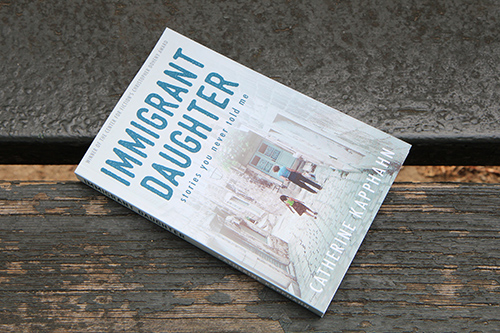
“Immigrant Daughter” tells the story of Catherine’s mother.
Catherine started it when she was in her early 20s, right after her mother died, but its origins really begin with her own birth.
Catherine, an only child, came into this world when her parents were living in Tulsa, Oklahoma. For the most part, though, she grew up in Colorado.
The family moved a lot, putting down shallow roots not only in Colorado but also in Lima, Peru, Singapore, Jakarta and Alaska and a slew of other places Catherine barely remembers. They were an exceedingly close family perhaps in part because of all the relocations.

Radek reading “Immigrant Daughter.”
“I had been in 12 different schools by the time I graduated from high school,” she says.
No matter where Catherine was, though, she found schoolwork hard.
“I couldn’t do math – I still can’t – and I always struggled to read and write,” she says, adding that despite her difficulties she majored in writing in college. “And I always worked twice as hard just to keep up with everyone else; to work so hard and not have it translate to the world is frustrating. It wasn’t until I was finishing graduate school when I was in my 30s that I was diagnosed with dyslexia.”
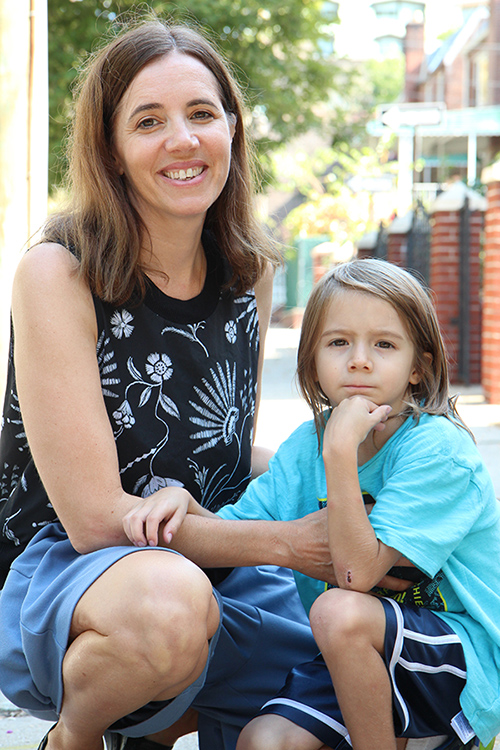
Catherine with her younger son, Rafa.
When Catherine was 20, she moved to New York City to study dance and acting, and that’s very well what she might have been doing now had her mother not been diagnosed with ovarian cancer.
She left her new life behind to care for her dying mother.
“My mother never talked about her life, and her death cut me off from her,” Catherine says. “I didn’t know her family or her history. I didn’t know my grandparents’ names or the village they were from, and I didn’t know how to speak Croatian, but my dad, who was not an immigrant, was able to fill in some of the gaps. Part of my grieving process was to resurrect those relatives I never knew.”

Catherine spent 20 years writing “Immigrant Daughter.”
When Catherine returned to New York City, she enrolled in Hunter College, where she took a memoir-writing class while majoring in English. One of the key chapters in Immigrant Daughter was written as an assignment.
“This class was a profound experience,” she says. “My professor believed I had a story to tell. My writing opened a door to entering my mother’s history in a different kind of way.”
After earning a master’s degree in creative nonfiction from Columbia University, Catherine became an adjunct lecturer at Lehman College, where she teaches writing.

Catherine made research trips to the former Yugoslavia while writing the book.
She moved forward – with her life and with her book. She made trips to the former Yugoslavia, once with her father and once alone; got married; had two sons (Radek is 13, Rafa is 7, and they have long hair like their mother); and settled in Astoria in 2005.
“It took me 13 years to get it published,” she says, adding that she camped out at New York City Bagel & Coffee House on 23rd Avenue at 31st Street for her final text-revising sessions this year. “But I’m very grateful that it didn’t get published when I wanted it to because in the last five years, changes have happened in the book.”
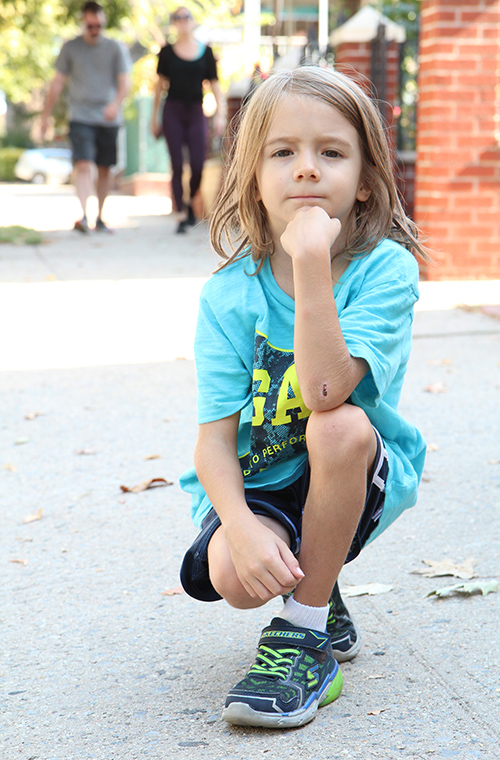
Catherine reads chapters aloud to Rafa.
Sometimes, Catherine still can’t believe Immigrant Daughter is being read by people around the world.
“I had no idea I could do this,” she says. “If you told me 20 years ago that I would write a book, I would have laughed. I may not be a traditional writer but because of my dyslexia, I have a very visual brain that makes interconnections. I don’t think anyone else could write this book but me.”

Catherine teaches writing at Lehman.
She hopes it helps people understand the immigrant experience.
“Immigrating is traumatic and filled with loss,” she says. “It’s a huge step for any family or person. I hope the book makes people understand how complicated it is.”
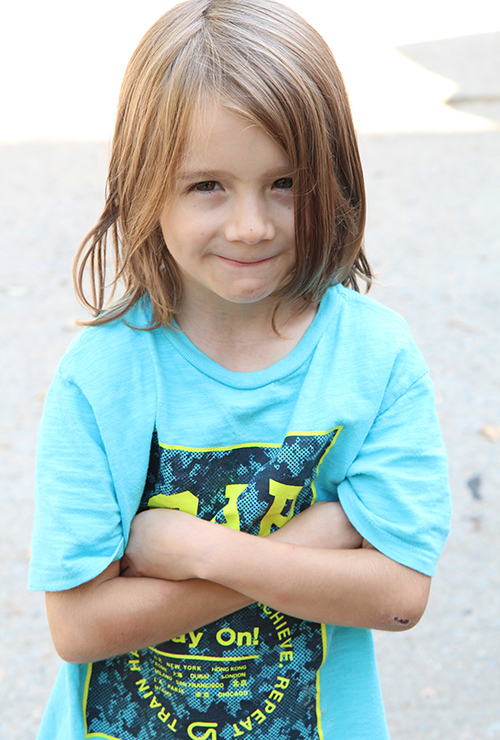
Rafa is 7.
Immigrant Daughter has resonated with readers.
“A few people have reached out to share their losses as young women whose mothers died of ovarian cancer,” she says. “Someone shared their experience in Germany in the early 1990s, meeting Bosnians and Croatians who were fleeing the war. Someone from London recognized the house in the cover photo. When I hear about people’s experiences and what the book makes them think about, it means a lot to me.”
The success has spurred Catherine to start a second book.
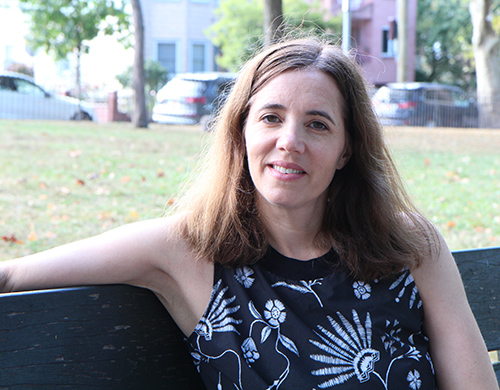
Catherine’s working on her second book.
“I don’t know whether it will be fiction or nonfiction or something in between,” she says. “But it will be something about my experience with dyslexia.”
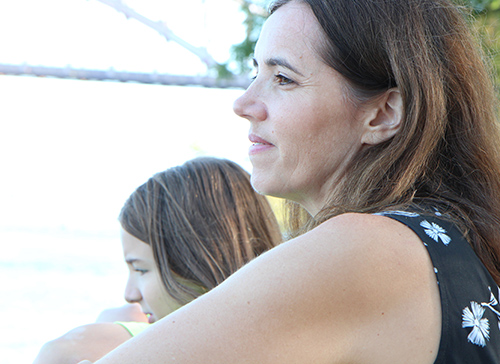
With the past revealed, Catherine’s facing the future.
In the meantime, she’s been practicing reading the text aloud so she can record an audio version of Immigrant Daughter.
Radek and Rafa like to listen to her.
Astoria Characters Day is Sept. 13, 2020. Sponsored by Bareburger, it’s a free, public event.
Nancy A. Ruhling may be reached at Nruhling@gmail.com; @nancyruhling; nruhling on Instagram, nancyruhling.com, astoriacharacters.com.
Copyright 2019 by Nancy A. Ruhling
